Tile is an integral part of nearly every bathroom design. Tile is versatile, water resistant, and can be installed on the floor, walls, or ceiling. Mosaic tiles in particular have all of these same benefits and attributes, but can offer you even more with added function and style when used in the bathroom.
What are Mosaic Tiles?
Mosaic tiles are defined as any material, type, or shape of tile that measures 2-inches or smaller. Most mosaic tiles are mounted onto sheets of either mesh or contact paper for easier installation, with most mosaics having the ability to be installed roughly 12-inches at a time. The sheets are easily cut between the rows of mosaic, allowing you to use the tiles in smaller areas such as single-row borders as well.
Because of their size, mosaic tiles can do things that larger tiles cannot, which offers you a variety of benefits and uses that can really enhance your bathroom design. Check out the following 7 benefits of using mosaic tile in the bathroom to take your design to the next level.
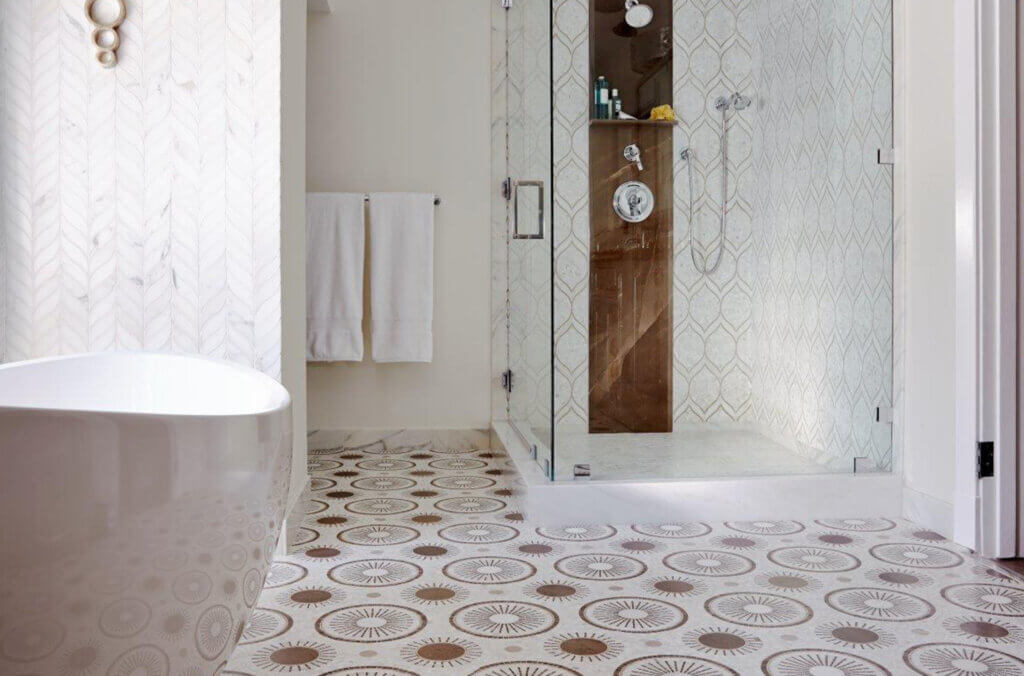
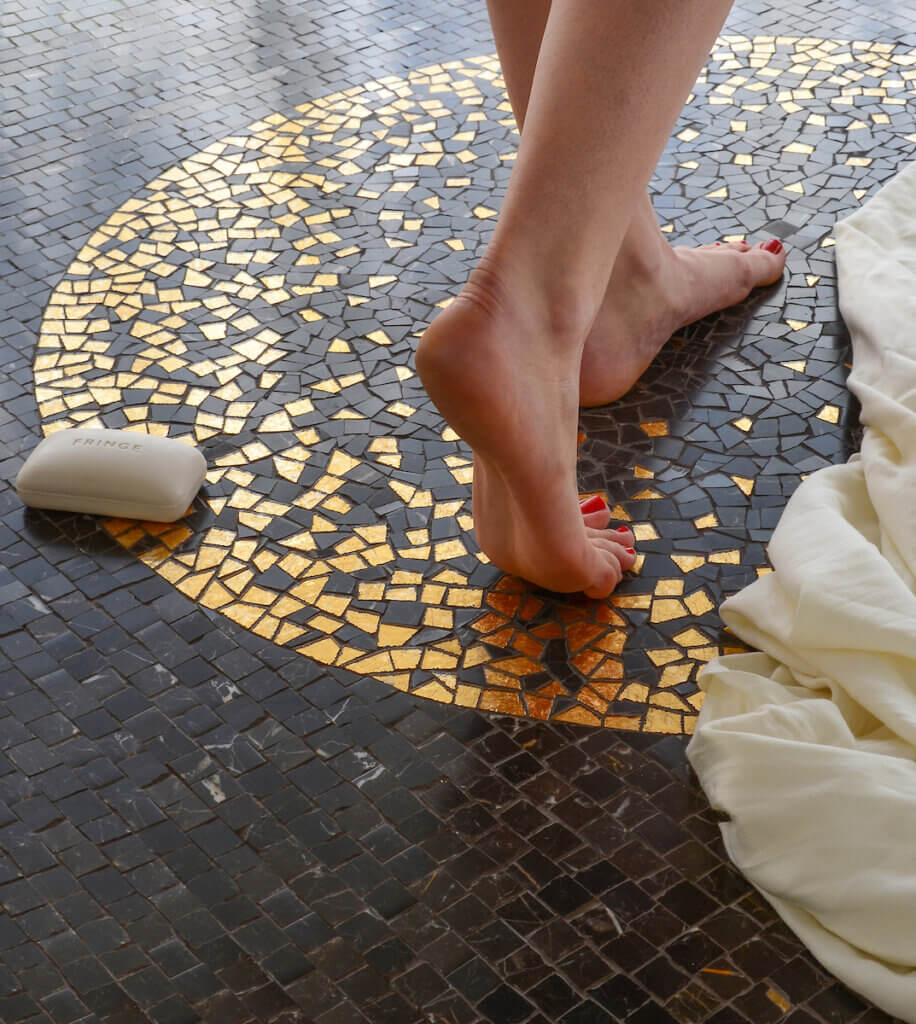 One of the best things about using mosaics for your bathroom tile is their ability to help create a non-skid surface. Mosaic tile installations use more grout than larger tiles, and the smaller the mosaic, the more grout there will be. All of that grout helps add slip protection to the floor. If your mosaics are textured, this can increase that slip protection.
One of the best things about using mosaics for your bathroom tile is their ability to help create a non-skid surface. Mosaic tile installations use more grout than larger tiles, and the smaller the mosaic, the more grout there will be. All of that grout helps add slip protection to the floor. If your mosaics are textured, this can increase that slip protection.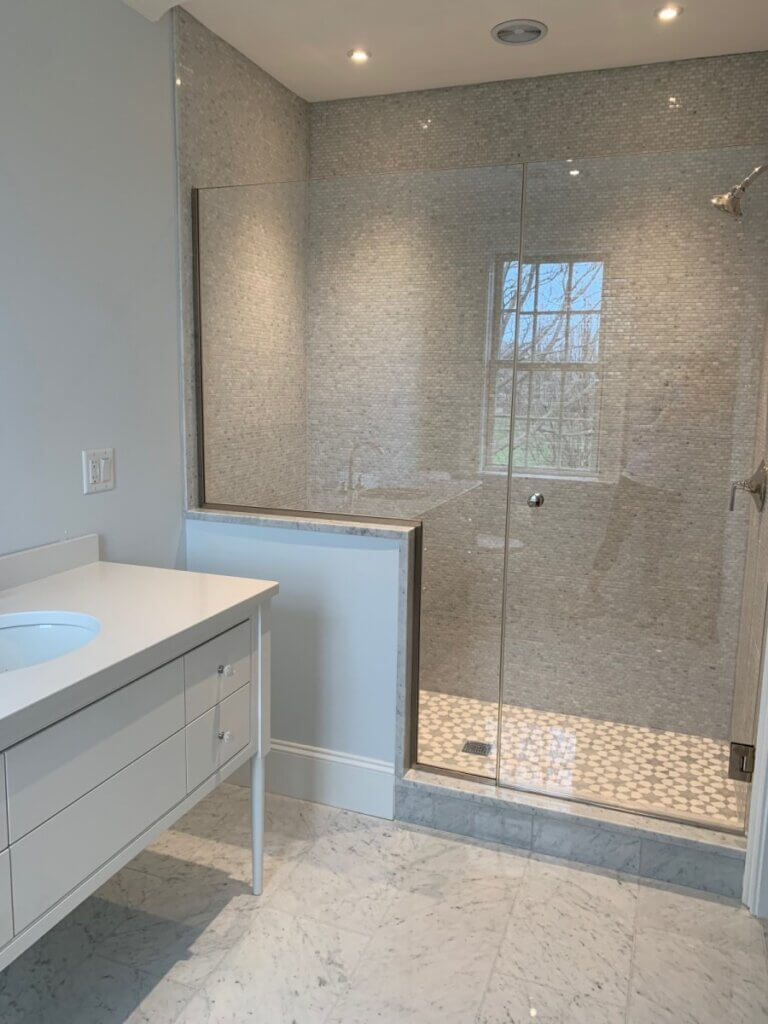 Whether your bathroom has a separate shower or you’re creating a wet room where the entire bathroom floor needs to slope down to the drain, mosaic tiles help facilitate that slope. In a shower, the floor must slope toward the drain ¼-inch for every foot. The larger the shower, the more dramatic this slope appears to be. If you’re creating a European-style wet room for your bathroom, the entire bathroom floor also needs to slope 1.5 to 2 degrees toward the drain. This is to help ensure that there are no standing puddles of water no matter how far out of the shower area the water has strayed.
Whether your bathroom has a separate shower or you’re creating a wet room where the entire bathroom floor needs to slope down to the drain, mosaic tiles help facilitate that slope. In a shower, the floor must slope toward the drain ¼-inch for every foot. The larger the shower, the more dramatic this slope appears to be. If you’re creating a European-style wet room for your bathroom, the entire bathroom floor also needs to slope 1.5 to 2 degrees toward the drain. This is to help ensure that there are no standing puddles of water no matter how far out of the shower area the water has strayed.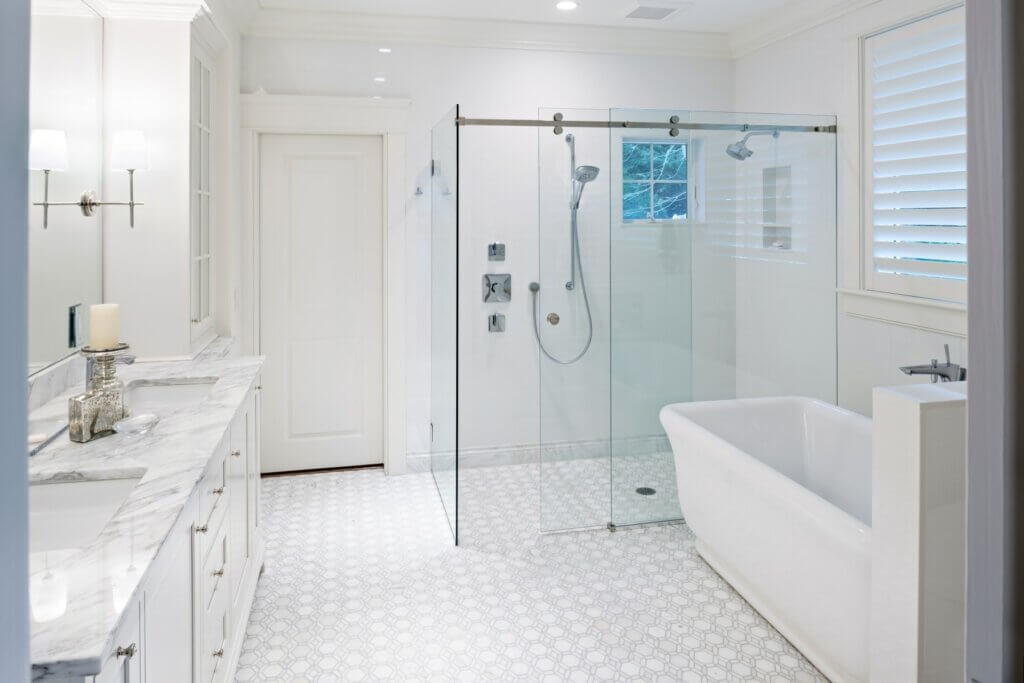 In addition to Universal Design being on the rise, so is Accessible Design. While Universal design strives to meet the needs of the greatest number of people, Accessible Design tries to meet the needs of the individual, and in many instances may comply with ADA standard guidelines for the bathroom.
In addition to Universal Design being on the rise, so is Accessible Design. While Universal design strives to meet the needs of the greatest number of people, Accessible Design tries to meet the needs of the individual, and in many instances may comply with ADA standard guidelines for the bathroom.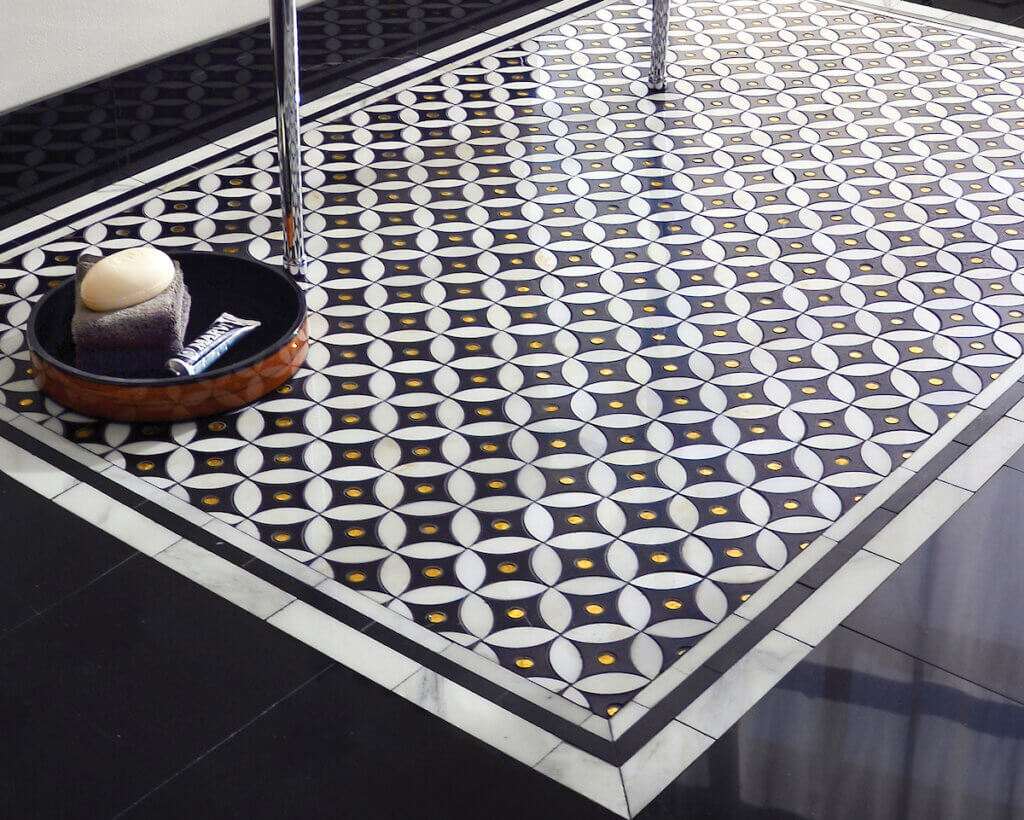 In addition to the functional and practical aspects of using mosaics in the bathroom, there are also several benefits for the design and style of the space. The first is in area definition. Mosaics are a fantastic way to help define spaces. They can achieve this in several ways, such as creating a mosaic “rug” beside tubs, showers, and sinks, using a mosaic border to separate different areas, or creating a transition to a barrier free shower floor.
In addition to the functional and practical aspects of using mosaics in the bathroom, there are also several benefits for the design and style of the space. The first is in area definition. Mosaics are a fantastic way to help define spaces. They can achieve this in several ways, such as creating a mosaic “rug” beside tubs, showers, and sinks, using a mosaic border to separate different areas, or creating a transition to a barrier free shower floor.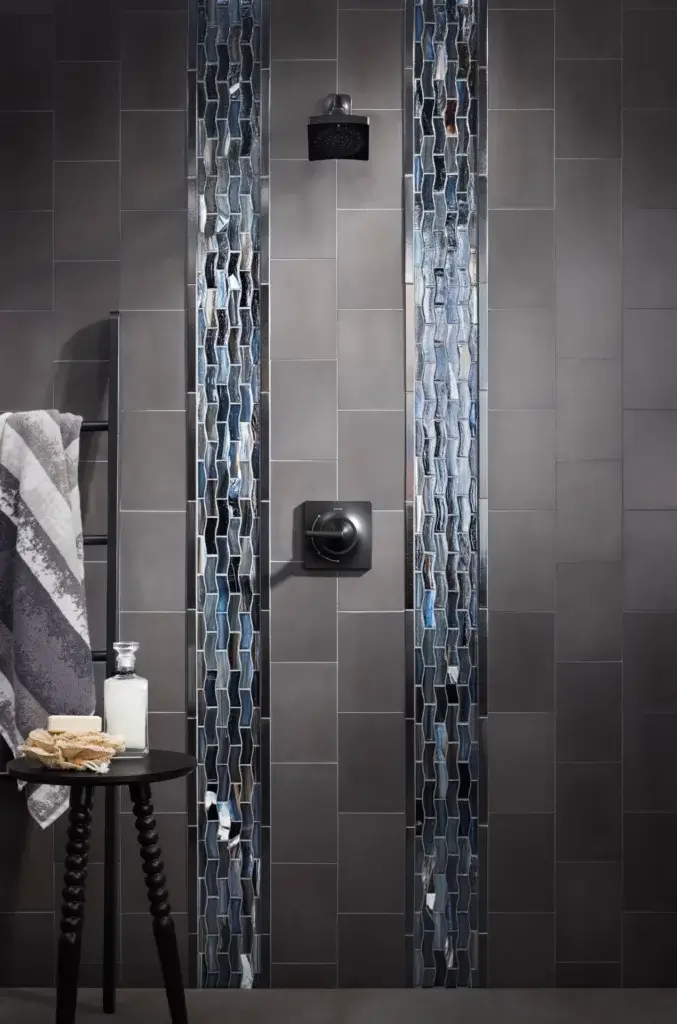 Mosaics also come in an incredible range of patterns as well as materials, sizes, and shapes. It’s possible to find ready-made mosaic borders that are in set patterns, as well as to find mosaic field tiles that can be cut into strips for border use. In addition, companies that specialize in mosaic design can create entire murals, pictures, and scenes out of mosaic tiles. This makes mosaics one of the most versatile ways to add accents and visual design elements to your bathroom.
Mosaics also come in an incredible range of patterns as well as materials, sizes, and shapes. It’s possible to find ready-made mosaic borders that are in set patterns, as well as to find mosaic field tiles that can be cut into strips for border use. In addition, companies that specialize in mosaic design can create entire murals, pictures, and scenes out of mosaic tiles. This makes mosaics one of the most versatile ways to add accents and visual design elements to your bathroom.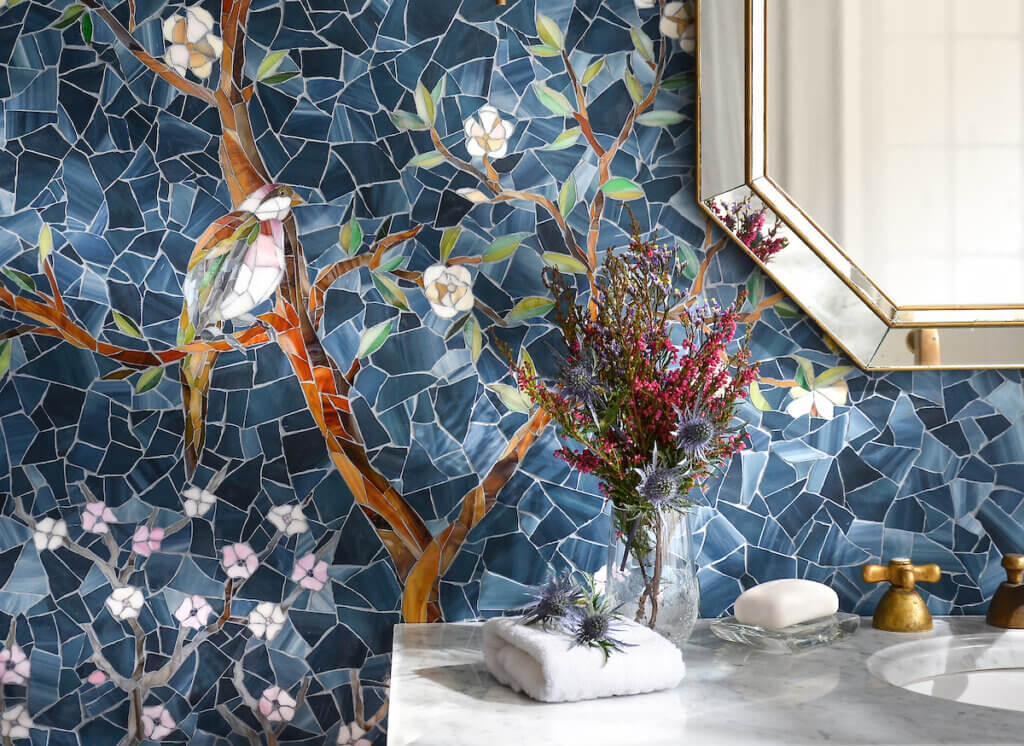 Mosaics can create eye catching focal points in a bathroom in a few different ways. You can use them to create a mural for floor or wall use. They can also be used as a type of tile “wallpaper” to add pattern to the space.
Mosaics can create eye catching focal points in a bathroom in a few different ways. You can use them to create a mural for floor or wall use. They can also be used as a type of tile “wallpaper” to add pattern to the space.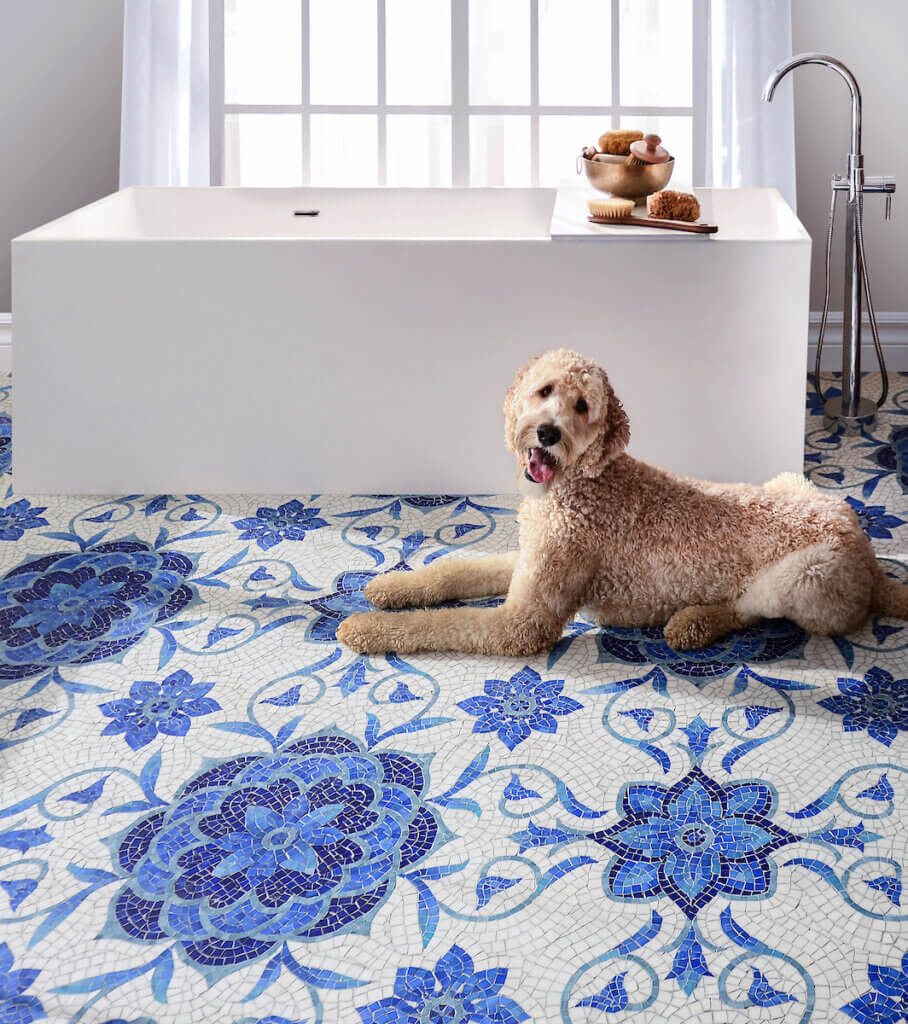 There are many rules of thumb when it comes to designing a small bathroom. Many homeowners with small bathrooms want to try and find ways to help make the room look larger, and mosaics can help do that.
There are many rules of thumb when it comes to designing a small bathroom. Many homeowners with small bathrooms want to try and find ways to help make the room look larger, and mosaics can help do that.



